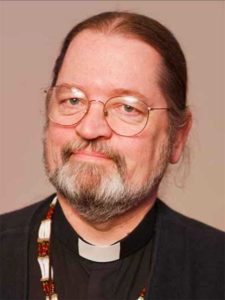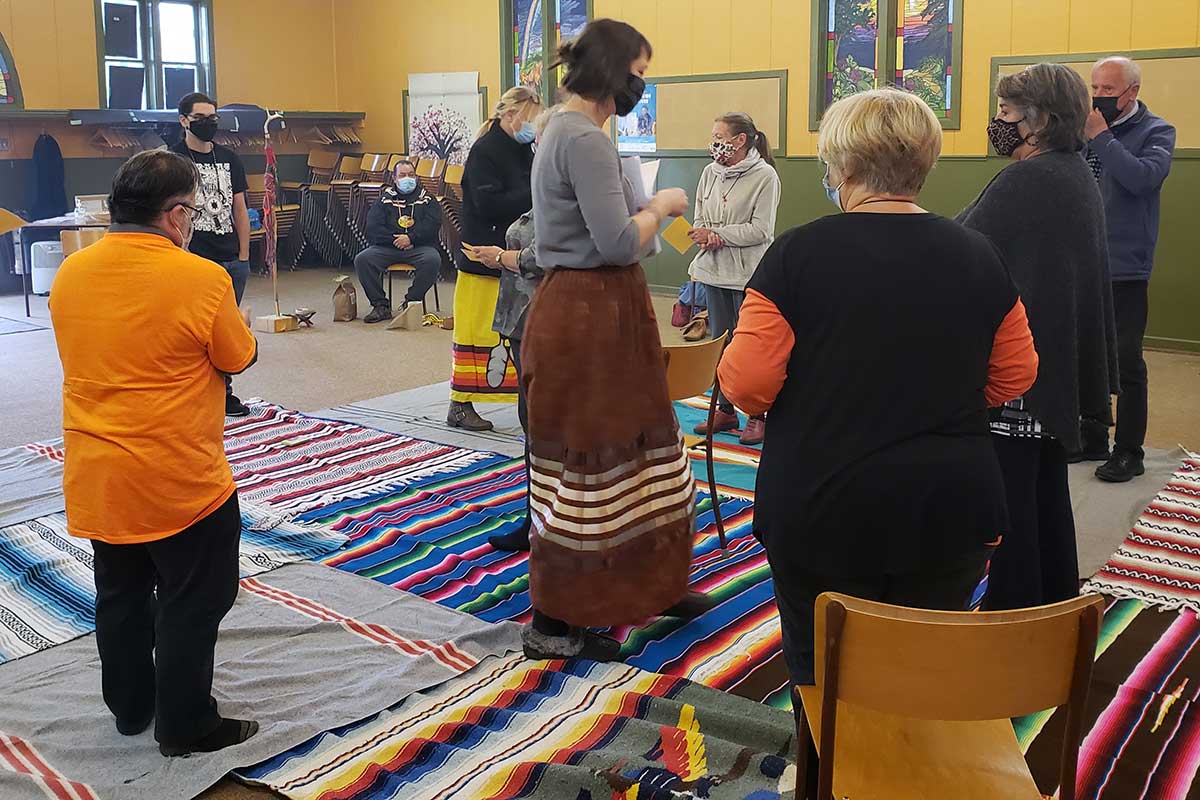Indigenous Peoples have used land acknowledgements for decades, but since 2015, with the release of the Truth and Reconciliation Commission Report on Residential Schools, we have grown accustomed to hearing them at educational and sporting events. Faith groups have also adopted the practice and, as parishes in the Diocese of Ottawa work to determine their Shape of Parish Ministry, the question of whose land they inhabit can become part of the discussion.

Archbishop Mark MacDonald, National Indigenous Anglican Bishop for the Anglican Church of Canada, graciously offered some thoughts on the subject in correspondence with All My Relations Circle member Janet Allingham. “Land acknowledgements have served to change the conversation in the church” with some parishes weaving them into a kind of “faith and action statement,” he said. At the same time, the archbishop concedes that land acknowledgements are of “mixed impact” because while they “serve to remind hearers about justice, they often serve as a device to lået people off the hook of real action on justice, an essential element of reconciliation.”
Are we expecting too much from land acknowledgements? Do we risk letting them do the work of reconciliation for us? Or are they, at the very least, a start. The following examples speak for themselves, demonstrating a range of events from across the diocese.
While acknowledgements in the Diocese of Ottawa take many forms, Christ Church Cathedral has incorporated one into its corporate statement. Written in both Algonquin and English it reads as follows: “Anishinabe aking ate awaso kikinawadjichigan/ A place of prayer on Algonquin territory since 1832.” Aware of this, a neighbouring parish has begun to consider adopting the practice as part of its upcoming anniversary.
The well-known Kairos Blanket Exercise is, at its root, an event of land acknowledgement.
The well-known Kairos Blanket Exercise is, at its root, an event of land acknowledgement. Many participants have called the event both educational and moving. Marian McGrath, of the Church of St. Mary Magdalene, said that the experience inspired her to want to “do more.” When the parish worked with the municipality in Chelsea, Que. to create a community path that crosses the land upon which the parish church stands, the parish was mindful that the path stands on the traditional and unceded territory of the Algonquin Anishinabeg, Bishop Shane and Albert Dumont attended to bless and smudge the trail respectively, and as reported in the March issue of Crosstalk, the Municipal Council of Chelsea recently unanimously approved a motion to name the trail Nakweyam diwin Mik (friendship trail), the name proposed by Elder Dumont.
Kathryn Fournier, a member of the Church of St Thomas the Apostle, says that a congregational group formed last year to study 21 Things You May Not Know About The Indian Act by Bob Joseph is committed to grounding the parish’s reconciliation wok in the local context. The group is continuing to meet to learn more about Indigenous peoples’ history in the area as well as to better understand the current land claim/modern treaty negotiations taking place between the Algonquins of Ontario, Ontario and Canada.
The effectiveness of land acknowledgements will be judged, Archbishop MacDonald said, “on the way that they inspire advocacy for and commitment to Indigenous judgement.” He added that there is “growing awareness that land was often seized illegally and immorally with justifications that were based in the systematic dehumanization of Indigenous Peoples.” Like the Biblical story of the scattering of seeds, when the words of land acknowledgement fall on fertile ground, they can lead to a richness of experience as individuals and communities embark upon or continue their journeys of reconciliation.


St. James, Morrisburg — Stormont Deanery